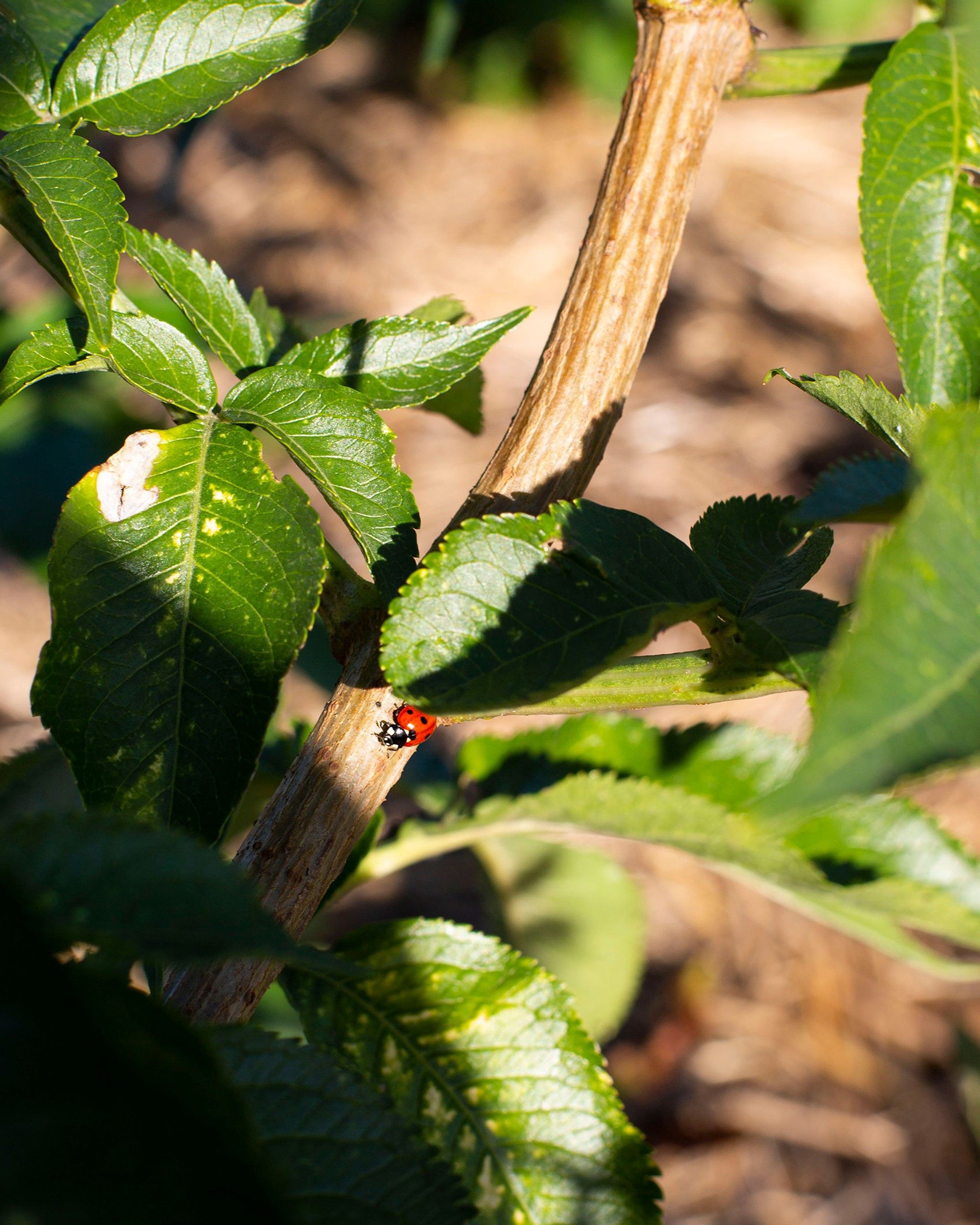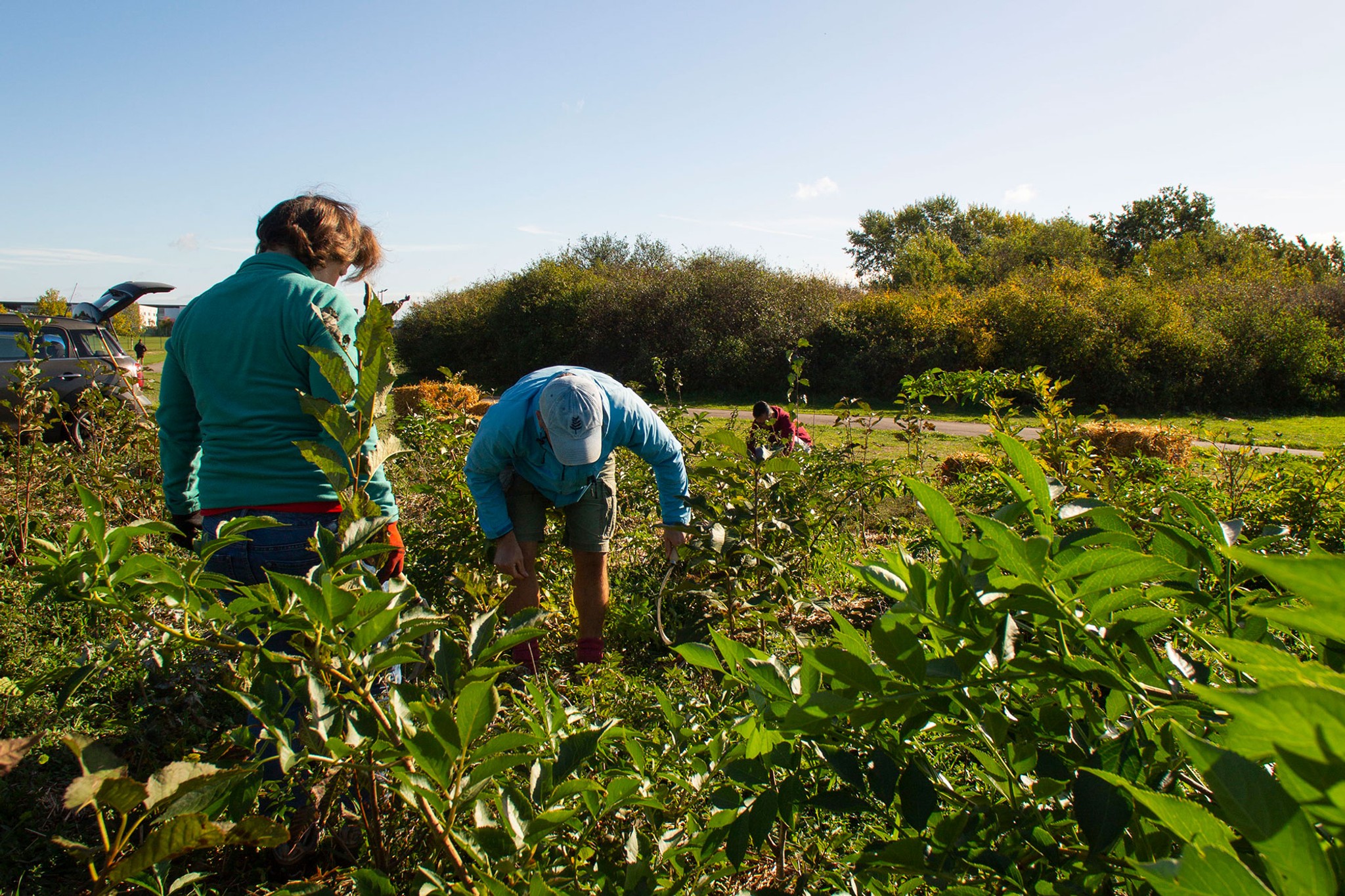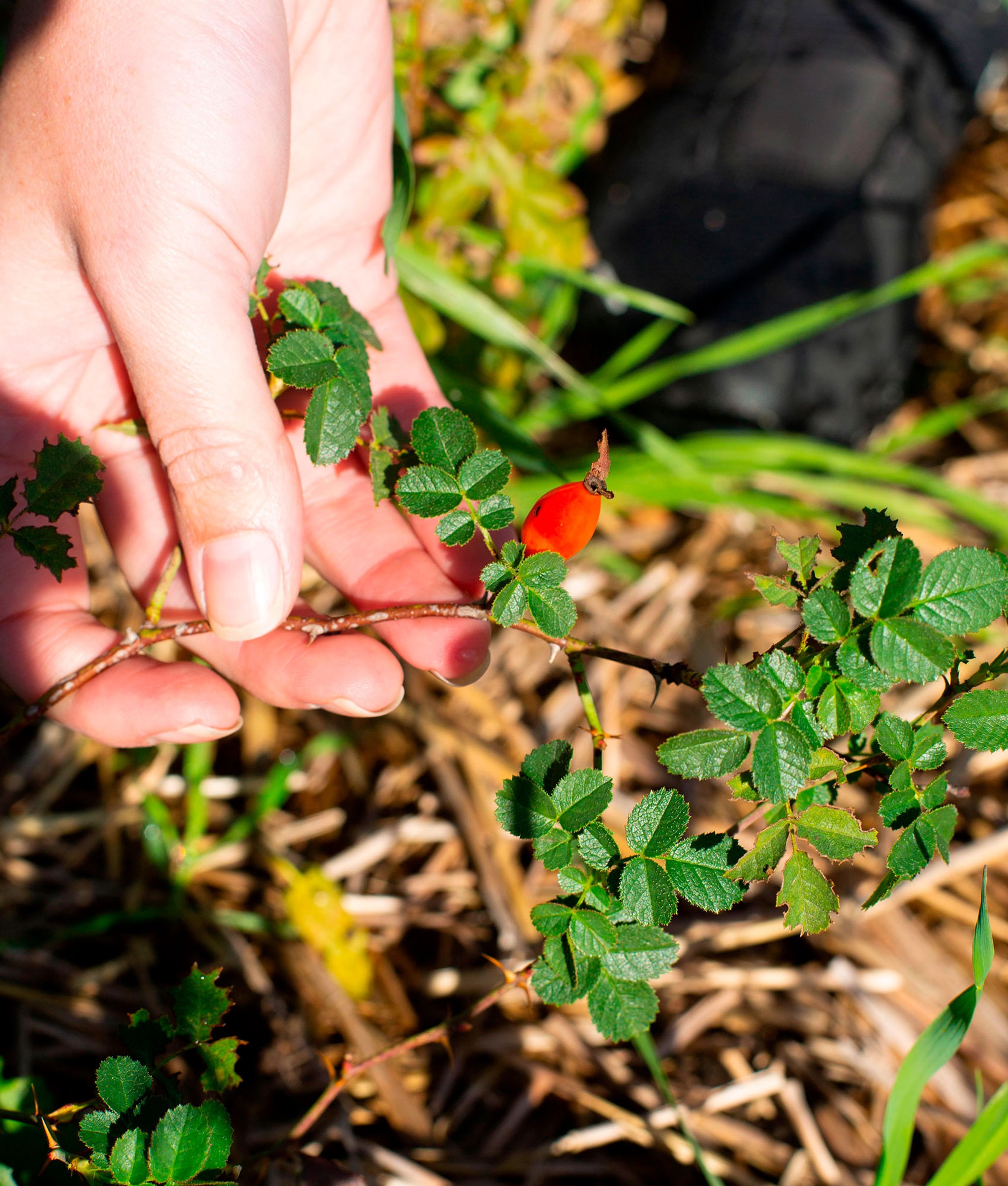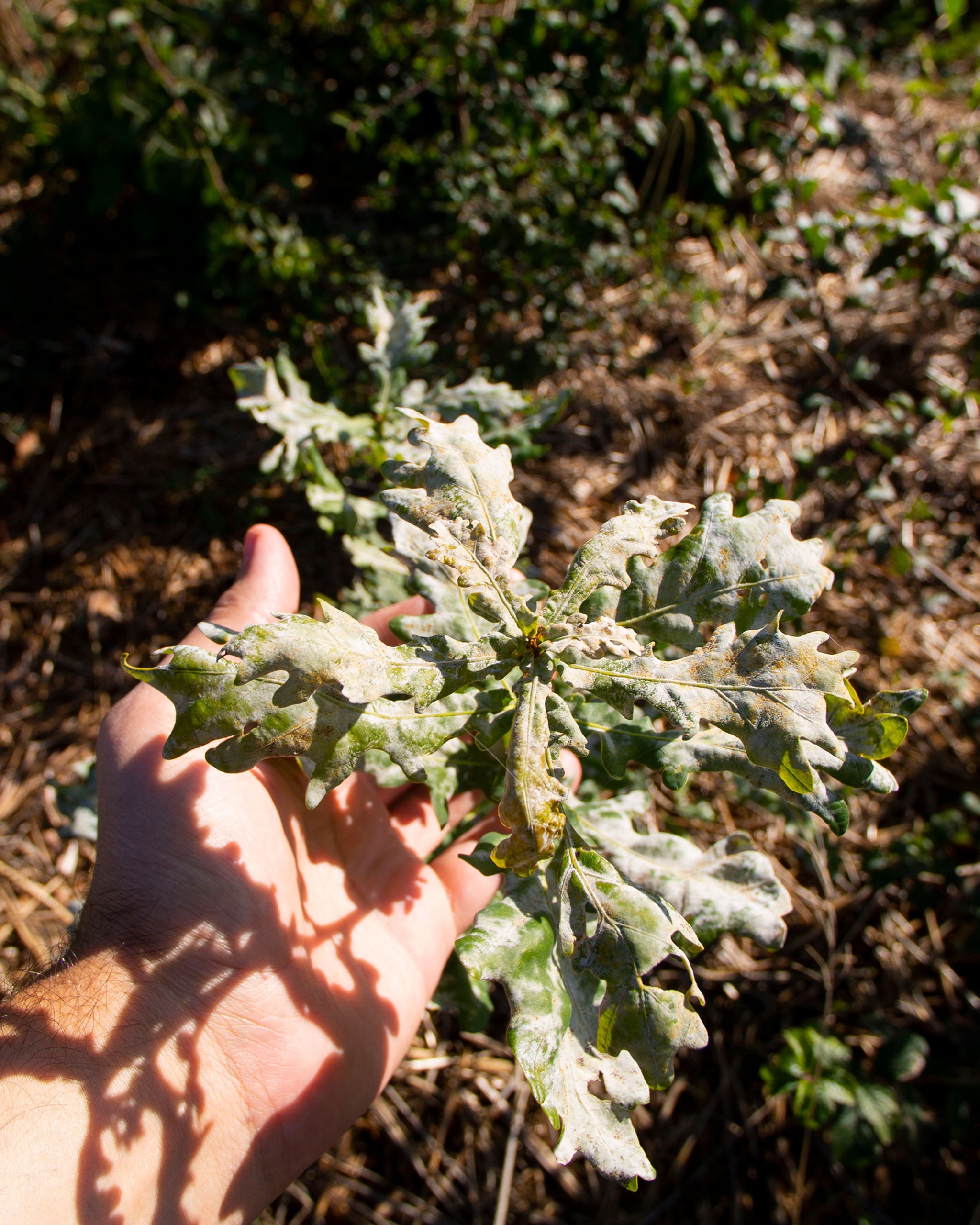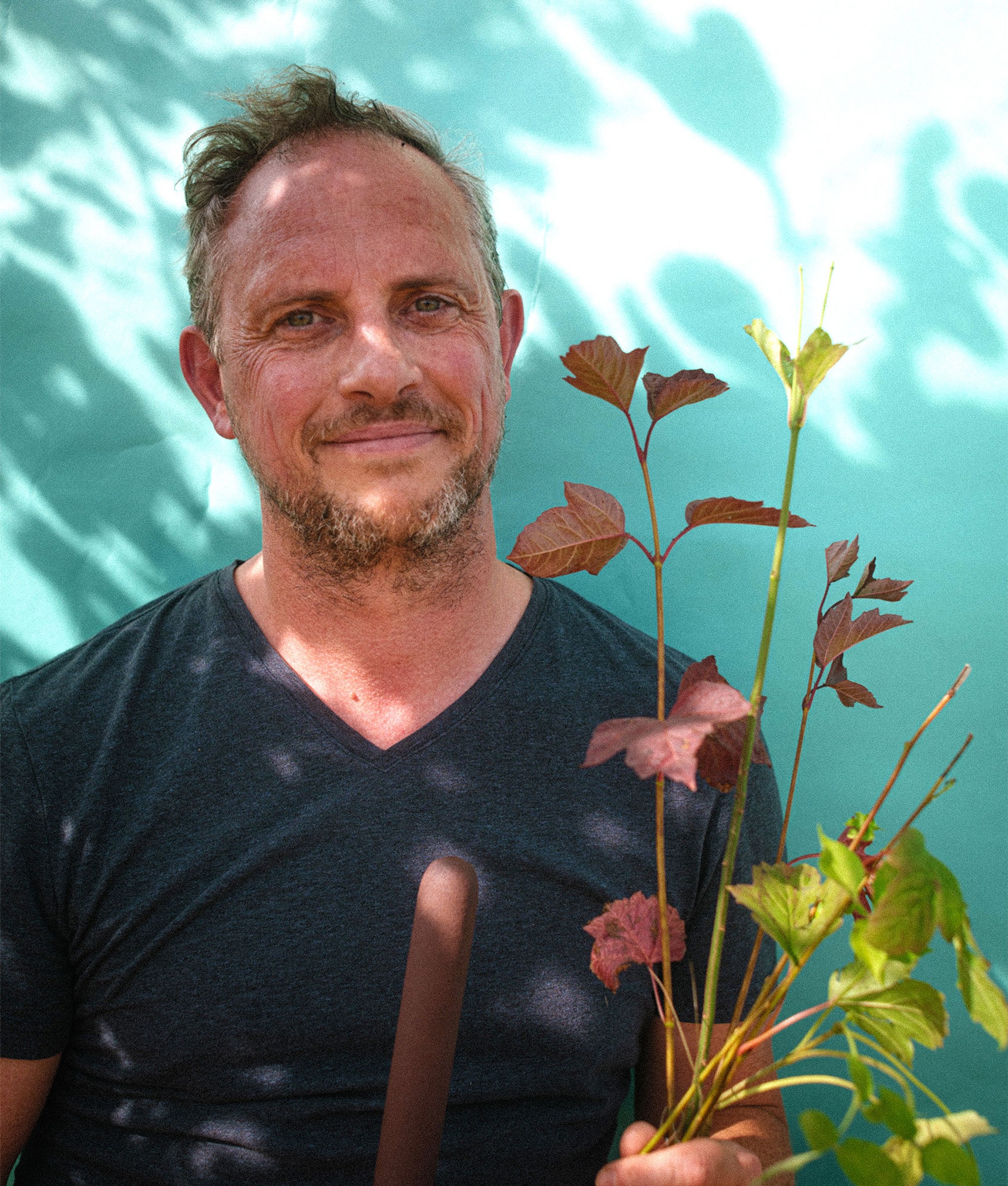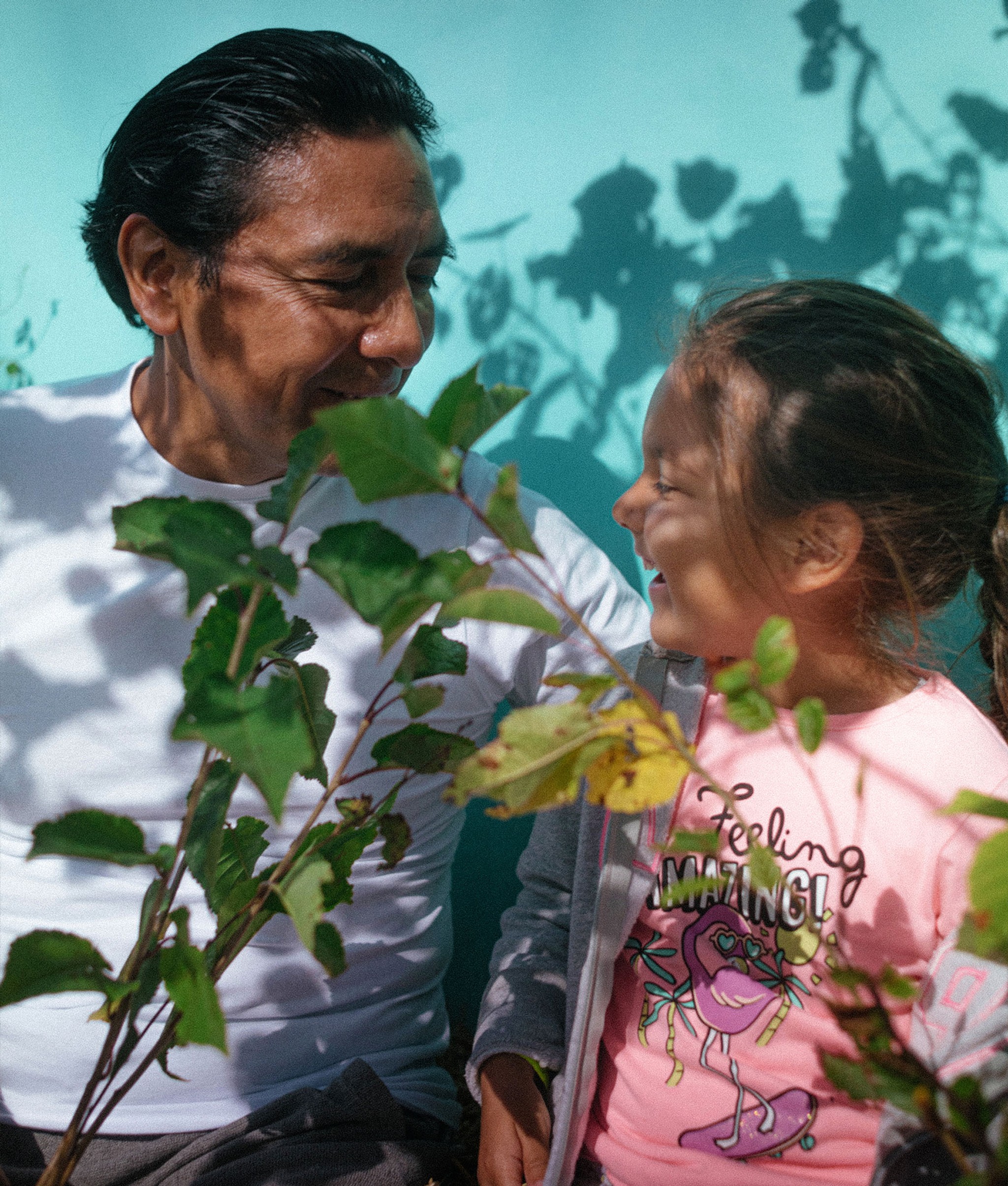Castle Green Forest
An urban forest to mitigate pollution and bring biodiversity.

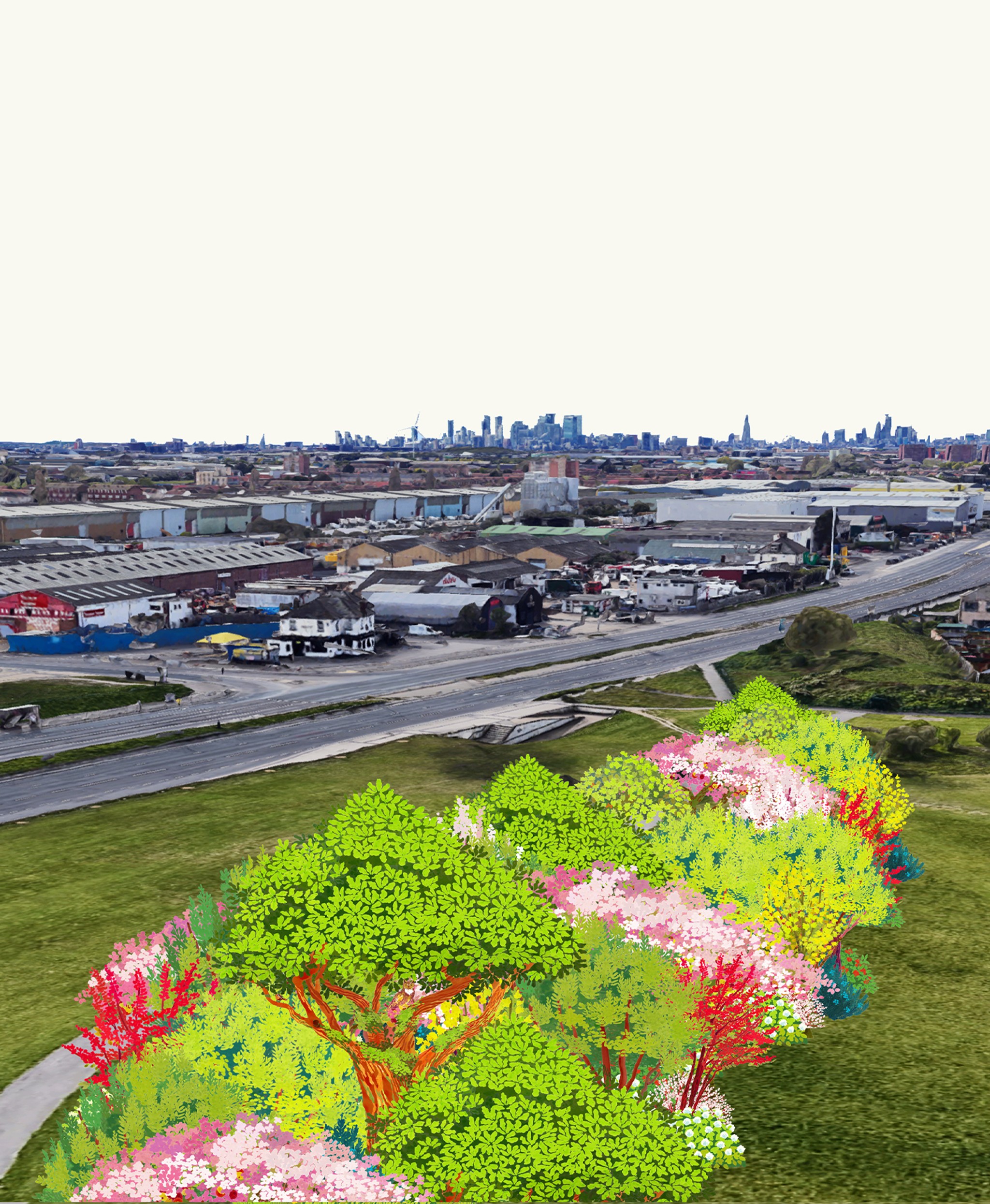
0
Trees
0
Square Meters
0
Native Species
Self sustaining pocket forest
Planted in 2021, Castle Green Forest has grown incredibly well. By 2024, the birch (Betula pendula) and elder (Sambucus nigra) trees stood at nearly 3 meters. The elder, in particular, boasts thick, dense foliage and has produced flowers and berries year-round. The early flowering willows (Salix caprea) have also attracted an abundance of pollinators, with a noticeable increase in bee activity observed during the spring of 2024.
The presence of mushrooms, the fruiting bodies of mycorrhizae, signifies healthy and fertile soil within this forest. Beneath the surface, mycorrhizal fungi are establishing intricate networks that connect with the roots of the young trees, providing essential nutrients and water for robust growth - an example of symbiosis in action.
The local community has embraced the forest, with dog walkers in particular expressing their appreciation for the diverse and vibrant landscape it offers.
Forest Maker
James Godfrey-Faussett
Forest Partner


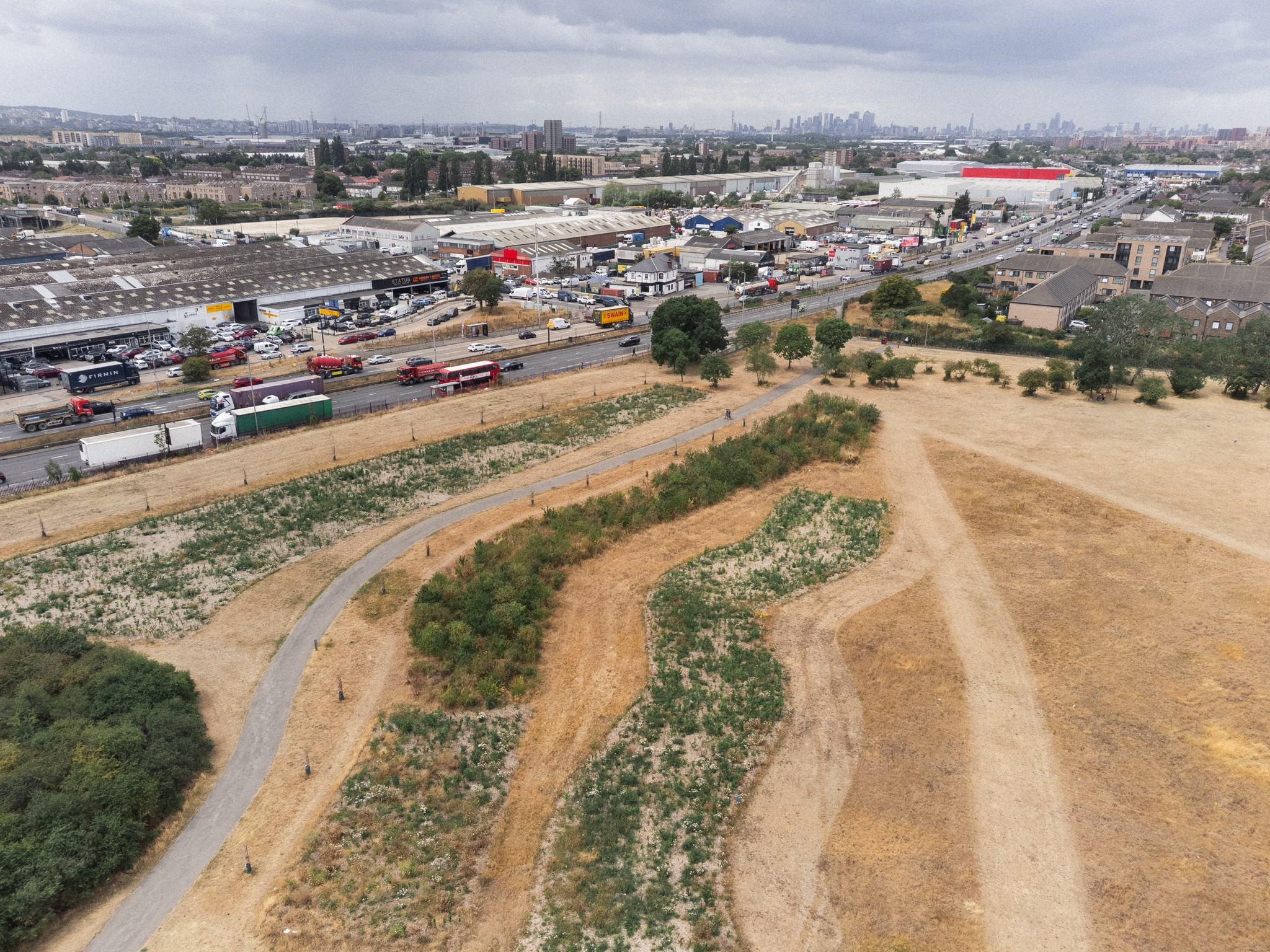
Ecosystem Restored
Final report: 25.07.2025
After approximately three years our SUGi Pocket Forests become self-sustaining. They no longer require human maintenance or watering, and can be handed over to Nature for biodiversity and complexity to naturally develop.
0%
Survival Rate
0
People living within 300 meters
0
kg of potential CO2 sequestration
Biodiversity
Biodiversity is all the different kinds of life you'll find in one area—the variety of animals, plants, fungi, and even microorganisms like bacteria that make up our natural world. Each of these species and organisms work together in ecosystems, like an intricate web, to maintain balance and support life.
0
Potential number of mammals
0
Potential number of birds
0
Potential number of amphibians
“The Castle Green forest is an example of bringing an urban forest right into the heart of where they are needed most. This area is heavily polluted and lacking biodiversity. The dense forest will go some way in mitigating airborne pollution and provide a peaceful haven for biodiversity to set up home and thrive among the urban sprawl.”
James Godfrey-Faussett, SUGi Forest Maker
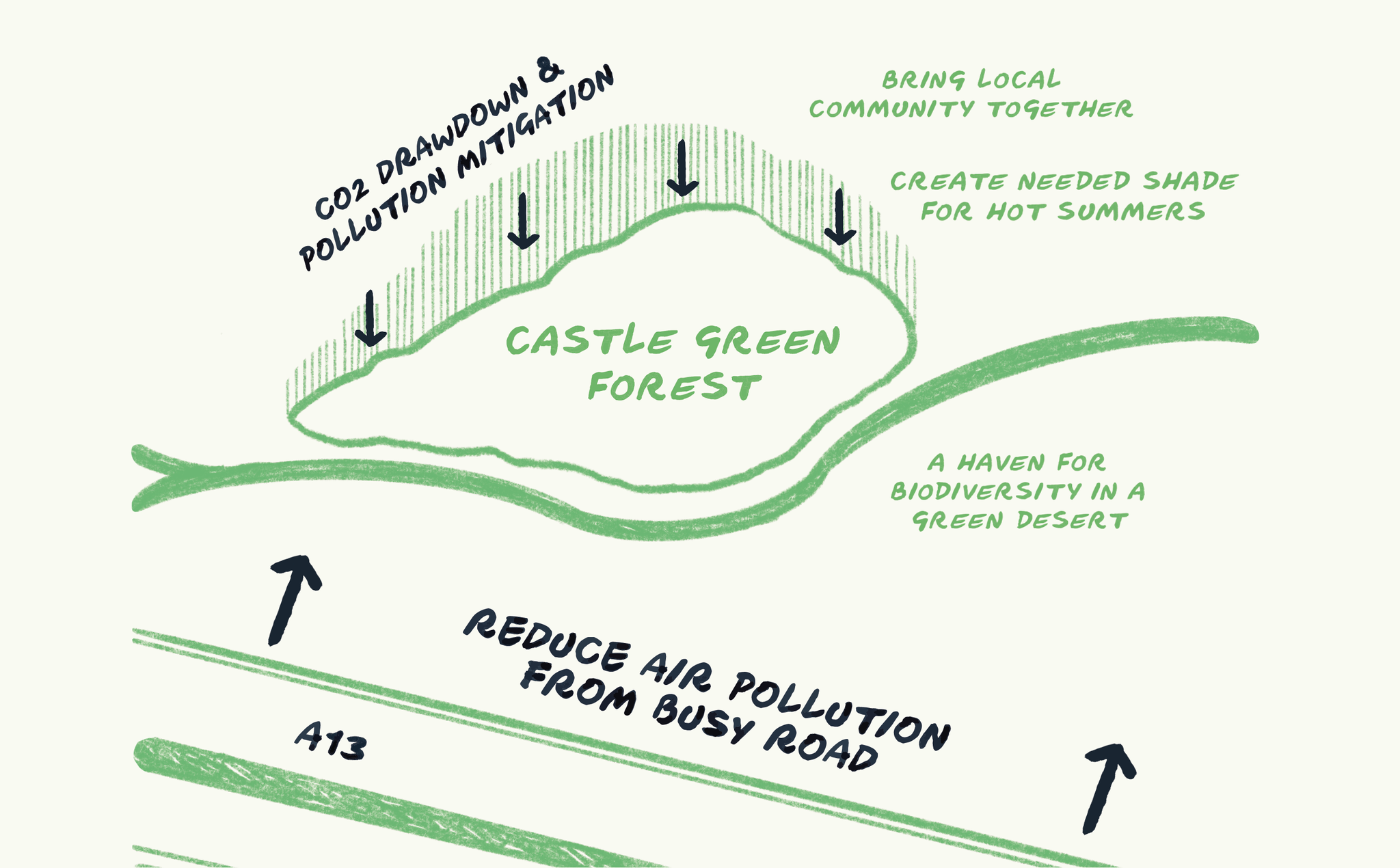
Forest Design
Urban Heat Profile
0°C
Surface Temperature Difference
The Urban Heat Island Effect is affecting cities more and more each year and temperatures in urban areas can go up to 12 degrees hotter. This can be reduced and prevented by planting urban forests like this. We collected the air temperatures on an unusually hot day in August at Castle Green Forest and saw amazing results.
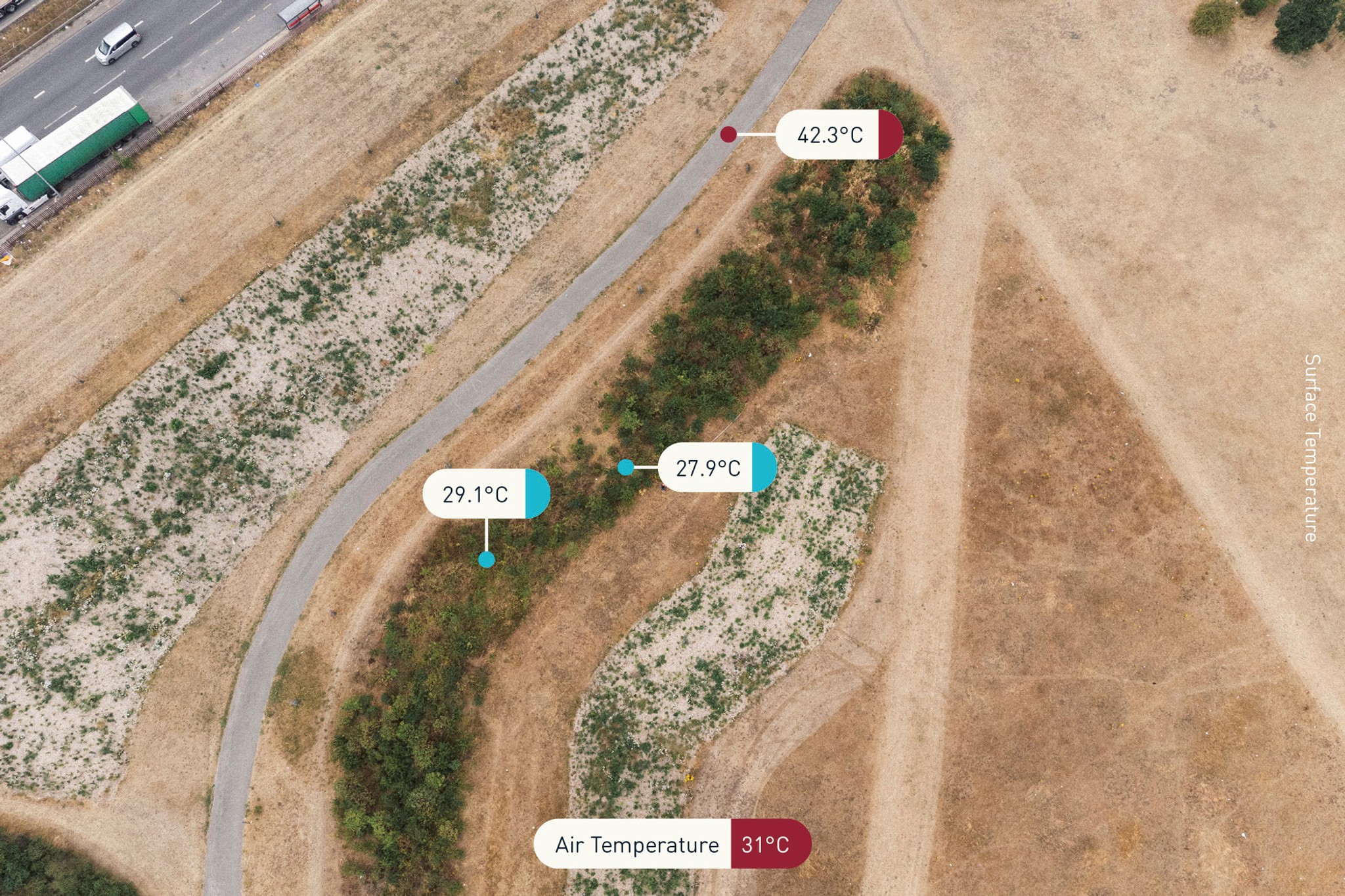
Forest Report: 2024
0Years
Forest Age
0%
Survival Rate
0m
Average of Tallest 3 Trees
Castle Green forest, like its neighbouring forests planted along its edges, continues growing well. The forest has put on a good amount of growth and in general looks healthy and happy, although there has been some rubbish dumped near it - which is why we organised volunteer litter pick-up sessions this winter.
Biodiversity Notes:
Forest Report: 2023
0 Years
Forest Age
0%
Survival Rate
0m
Average of Tallest 3 Trees
A linear forest block facing the main road and on the edge of the park. One or two warrens have been spotted in the middle of the forest planting area - a great sign that this forest is attracting wildlife and providing habitat. In general, all tree species seem to be thriving with potentially some new saplings that have self-seeded in the center of the forest. There is some patchy undergrowth with some bark mulch/hay still showing.
Biodiversity Notes:
Yarrow, dandelions, and various grass species are starting to self-seed among the planted saplings. One purple flower (perhaps Pelargonium/ Geranium sp.) was found on the edge of the forest; it potentially self-seeded from a private garden nearby.
Forest Report: 2022
0 Months
Forest Age
0%
Survival Rate
0m
Average of Tallest 3 Trees
Castle Green Forest is thriving at 1 year old and is bringing a visible change to this former biodiversity desert. It is a dense pocket of bright green in the heart of Castle Green Park. The sounds of bugs and birds can be heard as you stand by the forest, a welcome counterbalance to the busy traffic of the Ripple Road nearby.
The forest is demonstrating its resilience after the summer drought. Mulching thickly (with both willow mulch and straw) has benefited the forest and helped reduce the stressful effects of the summer heat of 2022.
Several species are doing particularly well - including dogwood (Cornus sanguinea), wild cherry (Prunus avium) and dog rose (Rosa canina). The tallest species currently is the elder (Sambucus nigra), with a girth of 30mm.
Biodiversity Notes:
Numerous ladybirds (Coccinellidae) have been seen. Various types of mushrooms have been observed too - mushrooms are the fruit of underground fungal hyphae forming and a sign of important initial fungal colonization in the soil.
“Things like this don’t normally happen around here. We really appreciate you being here.”
Local Residents
Planting: September 2021




























